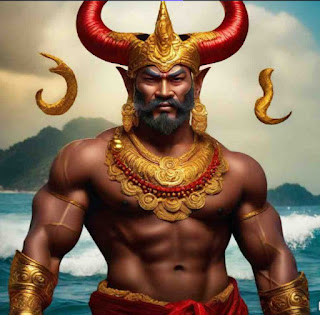Tambaluslus
The Tambalulos or tambaloslos is a creature in Bicolano myths and lore. It is the ugly embodiment of man's lust. It is said to be dark, ugly and scary with big mouth and lips, and a huge penis. Stories say that the tambaloslos waits for his victims, or sometimes makes people loose their way so he could trap them. Once trapped the tambaloslos would do perverse things with his victim. Raping it until he is satisfied. According Bicolano lore, the tambaloslos raped all things that got lost in its forest, men, women and even chicken and pigs, Gugurang angered by the perverse ways of tambaloslos cursed him that his balls and penis would grow big so that it could not fit into any hole. But the punishement did not stop the tambaloslos, scary tales still linger that it waits for its victims in dark parts of the forests
The Tambaluslus is an unusual and unsettling creature, described as having a black, wrinkled body with long, thin legs and large joints. It has a boar-like or horse-like mane that extends from its head down to its rear. Its wide, protruding lips cover its face when it laughs. The creature's name comes from its distinctive, wrinkled genitalia and saggy testicles, which hang low and touch the ground.
The Tambaluslus is known for hiding under trees during moonlit nights and chasing after people who are lost in the woods. Historically, it was a swift and dangerous beast that would assault any person or animal it encountered. However, it was punished by the deity Gugurang, which resulted in its large testicles slowing it down and its enormous penis becoming so large that it could no longer find any suitable partner.
REMINDER
The orally transmitted mythology of the Philippines is intended for sharing and understanding, not for appropriation, commercial exploitation, or the promotion of foreigners and foreign products. It is a dynamic narrative tradition that evolves over time, distinct from the standardized mythologies found in Western and European cultures. Unlike these established mythologies, the Philippine government has not mandated standardized versions of stories and legends.
Orally transmitted stories undergo variations and evolve over time, resulting in numerous different versions. There are many different version told by Filipinos,and retold by Filipinos.











.jpeg)
.jpeg)




